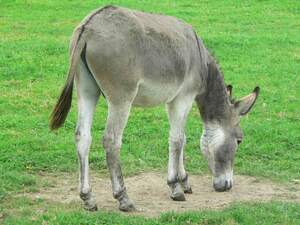

International Kite Day
International Kite Day started in India, where it takes place in the northwestern state of Gujarat, and is most widely celebrated in the city of Ahmedabad. The festival is known as Uttarayan in the Hindi language, and it is also called Makar Sakranti in parts of India. It celebrates the changing of the seasons from winter to summer, as well the upcoming harvest of winter crops. People come from countries all over the world to celebrate. The kites that are associated with the festival symbolize the spirit of gods awakening after their winter sleep.
Kite flying was originally done by royalty and the wealthy in India; at one time kings hired trained flyers to fly kites for them. Today people of all classes and backgrounds fly kites in India. Many people make kites weeks in advance of the festival, and kites get flown on the weeks surrounding the festival as well. The most common kites are simple, being made of lightweight colored paper with bamboo frames. Besides traditional kites, some have Bollywood stars or social messages on them. Kite strings are often covered with a mixture of rice and ground glass, which helps with "kite fighting". This is a game that takes place during the festival when flyers try to cut each other's strings and knock down their kites. For this reason many people have extra kites as backups, just in case their kite is taken down.
Although the biggest event is at the riverfront in Ahmedabad, people fly kites from the roofs of their homes throughout the rest of the city, as well as throughout the rest of the state. In fact, rooftop gathering with family and friends while flying kites is one of the biggest parts of the day. The eating of traditional Indian food is also an important part of the festival. Common foods include Tandoori chicken, undhiyu—which is a winter vegetable medley, sweets such as jalebi and chikki, and til laddoo, which is a sweet sesame seed brittle. During the day performers put on acrobat shows, and at night illuminated kites fill the air; these lighted kites are called tukkals. Fireworks also fill the night sky. Although this is an Indian festival, Hindu temples in the United States also often celebrate the day as well, and as it is known as an "international" festival, it can be celebrated by anyone.
It is believed that kites came from Shangdong, an eastern province of China; they were spread to India by traders, who brought them to Korea, and then across Asia. Different styles of kites, as well as different cultural purposes for flying them, came about in different locations. Early kites were often made with bamboo, and covered with silk and paper. In 1295 CE, European explorer Marco Polo documented kites and how to fly them. By the sixteenth century, books and literature had publicized kites as children's toys, which helped them gain in popularity. Eventually kites began being used for science. In 1749 Scottish meteorologist Alexander Wilson measured air temperature at 3,000 feet with a thermometer attached to a kite. Benjamin Franklin used a kite to prove lightning is electricity in 1752. The Wright brothers used kites for research when they were building the first airplane in the late 1800s. In the first half of the twentieth century, new kite designs began taking flight, such as the diamond kite, tetrahedral kite, flexible kite, sled kite, and parafoil kite. Starting in the 1950s, NASA began using kites for spaceship recovery. Over the years kites have also been used for surveillance during war. The American Kitefliers Association was formed in 1964.
How to Observe International Kite Day
If you can't make it to Ahmedabad for the kite festival, you can still celebrate from where you live. Go to a park and fly a kite. If you don't have a kite, buy one or make your own. You could make a diamond kite or tetrahedral kite. You could search for some kite festivals or events in your area, or plan a trip to some of the other big kite festivals around the world. If you are able to make it to Ahmedabad, there is a kite museum there. There also is one in the state of Washington. You also could join the American Kitefliers Association, and find kite clubs and retailers in your area. Finally, you could make some Indian food that is traditionally eaten at the festival in India.





















